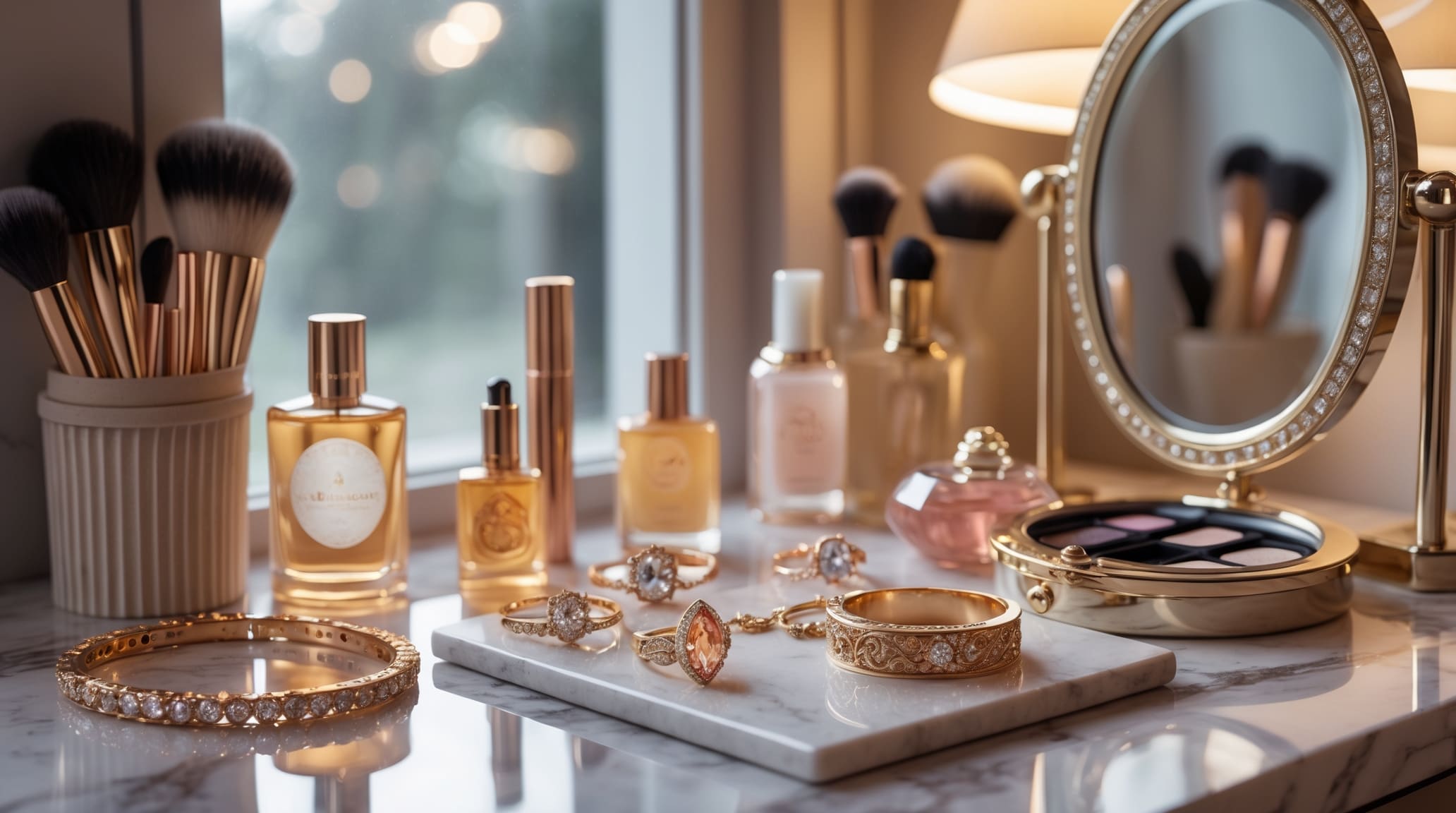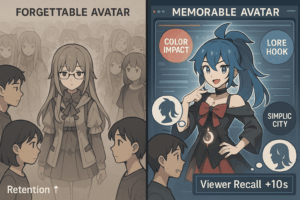In the world of 3D jewelry, every tiny detail matters. Whether for game engines, virtual stores, or high-end presentations, the ability to create lifelike textures and materials is essential. Precision in 3D models can make the difference between making a realistic, high-quality product and an unrealistic one. From the right textures to the finest materials, let’s explore how these elements define 3D jewelry and why they are essential for achieving stunning visual quality.
Why Detail Matters in 3D Jewelry?
When designing 3D jewelry models, achieving realism is key. Designers must pay attention to textures, materials, and styles to ensure the jewelry looks authentic in any scene, whether for marketing, game engines, or e-commerce. The smallest details, like how light reflects on metal or how gemstones capture brilliance, can elevate a 3D model from good to exceptional.
High-quality 3D jewelry models can be used across various projects, from video advertisements to immersive experiences in game engines. These assets are crucial for brands looking to build a visually appealing collection that resonates with customers.
Textures: Bringing 3D Jewelry to Life
Textures define how the surface of a 3D jewelry piece interacts with light. Whether it’s the polished shine of gold or the rough finish of a handcrafted ring, textures add depth and realism. The most common texture maps used in 3D models include:
- Diffuse Maps – They define the object’s base colour and visible surface patterns. They set the tone and texture, making models look realistic at first glance.
- Normal Maps – They simulate tiny bumps, wrinkles, and folds on the surface. Without adding geometry, they give the illusion of high detail.
- Specular Maps – These maps determine the shine and highlight strength of materials. They control how light reflects, making metals gleam or fabrics stay matte.
- Bump Maps – Bump maps fake depth by altering light shading on flat surfaces. They add texture contrast without modifying the 3D mesh.
By using high-resolution textures, designers can ensure that 3D jewelry appears as realistic as possible, enhancing its visual appeal in any scene.
Materials: The Foundation of Realism
The choice and blend of materials significantly affect how a 3D jewelry model looks and feels. Metals, gemstones, and even enamel require different shading techniques to appear photorealistic. In game engines, materials need to be optimized to work within real-time rendering constraints while maintaining high quality.
Some key material properties include:
Metallic & Roughness
These maps control how a surface interacts with light. While metallic values define reflectivity, roughness determines how smooth or matte it looks. As a result, you can easily switch between glossy metals and soft, diffused finishes with precision.
Transparency & Refraction
Transparency and refraction work together to create lifelike clarity and distortion in materials like gemstones. While transparency controls how light passes through, refraction bends it realistically. Therefore, you can replicate the brilliance and depth seen in real diamonds or glass.
Subsurface Scattering
Subsurface scattering mimics how light penetrates and scatters within translucent materials. This effect is vital for surfaces like pearls or opals. Consequently, it brings organic realism and depth, making your 3D jewelry appear more delicate, luxurious, and true to life.
Styles: Crafting Unique 3D Jewelry Designs
3D jewelry models come in a variety of styles, from traditional to modern. Whether replicating antique heirlooms or crafting futuristic digital accessories, understanding different styles helps create compelling 3D assets.
Classic Fine Jewelry – Designers craft timeless pieces using diamonds, gold, and platinum. These styles never go out of fashion and add elegance to any collection. As a result, they remain a staple in luxury catalogs and high-end marketplaces.
Minimalist & Contemporary – Artists focus on clean lines and subtle detailing to create modern elegance. Moreover, these pieces appeal to younger audiences and trendsetters, making them popular in fashion-forward online stores and digital lookbooks.
Fantasy & Concept Jewelry – Designers unleash creativity to produce bold, artistic pieces often inspired by fantasy worlds. Consequently, these styles work perfectly for gaming avatars, films, and immersive storytelling experiences.
Engraved & Customized – Creators design personalized rings, pendants, and bracelets that reflect individual stories. With growing demand for meaningful pieces, these styles offer emotional value and are ideal for gifts, commemorations, and digital replicas in virtual stores.
Tools for Creating High-Quality 3D Jewelry Models
To achieve perfection in 3D jewelry creation, designers rely on advanced tools like Blender, 3ds Max, and Maya. These powerful software solutions offer robust sculpting, texturing, and rendering capabilities, allowing creators to craft intricate and photorealistic jewelry models. Moreover, choosing the right file format is crucial for workflow efficiency and compatibility. Designers often use OBJ, a versatile format supported by most 3D platforms. For 3D printing and prototyping, STL remains the ideal choice. Meanwhile, FBX is commonly used for game engines and animation due to its flexibility. Additionally, native formats like MAX and Blend ensure seamless project handling within 3ds Max and Blender.
3D Jewelry for Game Engines & Virtual Try-Ons
The demand for 3D jewelry in game engines and AR/VR applications is growing. High-quality 3D jewelry models allow players and users to interact with jewelry in real time, offering immersive experiences in digital fashion, games, and e-commerce. Whether it’s for character customization in game engines, integrating cars in virtual worlds, or styling accessories with detailed food photography, the use of 3D jewelry is transforming industries.
Key Advantages of Using 3D Jewelry in Game Engines:
Realistic Rendering – Artists use advanced rendering techniques to enhance visual fidelity, making 3D jewelry appear lifelike. As a result, these visuals rival luxury food shots or premium car ads, adding irresistible appeal to online stores and marketing campaigns.
Interactivity – Designers add features that let users rotate, zoom, and virtually try on jewelry. Consequently, this boosts user engagement, especially in e-commerce platforms, AR apps, and other interactive experiences that demand immersive product interaction.
Seamless Integration – Teams ensure that jewelry assets work flawlessly with engines like Unreal and Unity. Therefore, brands can easily deploy these visuals across games, virtual showrooms, and digital campaigns without compatibility issues.
With game engines evolving rapidly, designers and developers seek to download optimized jewelry models in formats like OBJ, STL, FBX, MAX, and BLEND to complete their projects. At 3DAiLY, we are proud to provide high-end 3D solutions that help brands start their journey into digital jewelry with the best tools available.
Bottom Line
At 3DAiLY, we transform jewelry designs into photorealistic 3D visuals that shine across e-commerce, game engines, and luxury marketing. Using patented technology and cutting-edge tools, we deliver unmatched quality that grabs attention and boosts engagement. Our team creates high-resolution models with intricate textures, fully optimized for interactive platforms. Whether you need custom creations or production-ready assets, we tailor every detail to match your brand’s unique vision. From concept to conversion, 3DAiLY helps you stand out with precision-crafted 3D jewelry. Let’s bring your collection to life. Start your journey with us today! Jewelry with Cutting-Edge 3D Technology! Let’s bring your designs to life, star to start your 3D jewelry journey with 3DAiLY today!



